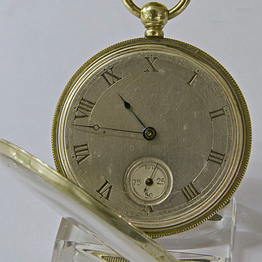For example,
60 seconds = 1 minute
60 minutes = 1 hour
24 hours = 1 day
7 day = 1 week
29-31 days = Month (approx.)
365/366 days = year
It’s like for the imperial measurement of distance, where 1 mile = 5280 feet…
Edit: just to clarify, I’m more or less keen towards any consistent, decimal-based measurement systems like base-10 or base-12.
Please don’t touch it now
– the entire software developer community around the world
Just, https://www.youtube.com/watch?v=-5wpm-gesOY… (The Problem with Time & Timezones - Computerphile) …
The main reason is because we use natural cycles that are important for civic and agricultural reasons as the basis of our measurements. And those cycles are unrelated phenomena that don’t match with each other well.
Day and year are based (duh) on two solar cycles (Earth’s rotation and translation), while the month and week are based on the lunar cycle of translation around the earth in roughly 28 days. When people tried to force lunar and solar calendars to fit, we ended up with the inconsistent months we have.
The 12/60 base divisions of the day were chosen before we had good calculators. Numbers with many divisors like 12 and 60 help a lot with mental math when you don’t have calculators.
There have been proposals of better calendars. The French tried something during the revolution and other people as well. The French republican calendar was:
- 1 hour = 100 minutes
- 1 day = 10 hours
- 1 week = 10 days
- 1 month = 3 weeks
- 1 year = 12 months + 5 monthless holiday
Another idea is the Cotsworth Plan:
- 1 minute = 100 seconds
- 1 hour = 100 minutes
- 1 day = 10 hours
- 1 week = 7 days
- 1 month = 4 weeks
- 1 year = 13 months + 1 special monthless holiday
I like the French Republican Calendar, but I would change it to months with 6 weeks of 5 days instead. And divide the week into 3 work days, 2 weekends.
Well, the time for eath rotation isnt a constant, it will slowly decelerate and days will be longer.
Using multiples of 10 for time was considered, but was a shitty option compared to the current deal. Months should all be 30 days and then have a free week at the end of the year tho, egyptian style.
Parties during that week would be unreal
they were, in ancient egypt. They were supposed to be dangerous days, because religion wanted to keep control of the people on the days they werent tied to the regular schedule, by scaring them.
Unfortunately, seasons, years, when it’s light out compared to the length of a day… These are not conveniently metricised.
Let alone standardized?
12 hours in half a day is fine for me. 12 can be divided into halves, thirds, quarters and sixths. That’s useful for planning out a day. Time is one of the applications where I don’t have a complaint about using base 12.
Exactly why there are 12 months and 24h a day, for easy divisions.
I think the 12 months thing is more due to the cycle of the moon being about 12 per year right?
Yeah, 12.4 moon cycles a year.
The real confusion is when you count the days in a month, or year…
those come from the conflict between the solar and lunar calendars
I’ve heard of a suggestion of using 13 months of 4 weeks each.
It adds up to 364 days.
The remainder day is a new type of annual leap day and you get the additional normal one every 4 years.
This seems more consistent…
we eat captured solar energy and rely on tides & animal behavior which is connected to lunar cycles, the sun and the moon are what our efforts to measure time are hinged on at the macro level. the biggest problem is that the sun and moon do not sync up neatly in their movements. there are solar calendars and lunar calendars and attempts to merge them are difficult mathematically.
for example:
Since each lunation is approximately 29+1⁄2 days, it is common for the months of a lunar calendar to alternate between 29 and 30 days. Since the period of 12 such lunations, a lunar year, is 354 days, 8 hours, 48 minutes, 34 seconds (354.36707 days), purely lunar calendars are 11 to 12 days shorter than the solar year. In purely lunar calendars, which do not make use of intercalation, the lunar months cycle through all the seasons of a solar year over the course of a 33–34 lunar-year cycle.
One can reach twelve joints on a 4-fingered hand with the thumb. That’s the basis of the base-12 counting system.
Americans use the imperial system, yet claim not to be imperialist. Curious 🤔
I mean, days of the year is fine as is because that matches seasonal cycles which is important for agriculture and the like. Ofcourse along the equator lunar calenders were historically used because they don’t have different seasons but a calender used by everyone keeps things consistent for trade and the agricultural trade is still one of the most important things for humanity so it best remains a solar calendar.
As for time, 60 and 24 and in general multiples of 12 are great units because they can be easily divisible in many ways. This is why they were established as such in the first place, because Babylon had a big thing for what is called “extremely composite numbers” which are basically just a number that has more factors than any previous and equal to all subsequent ones (until the next extremely composite number) and all multiples of 12 (as far as I know) fall into this category. This means that units that are multiples of 12 both easily divide into each other (making it useful for changing between units) and easily divide into many other numbers making it easier to schedule a day as you have nice clean boundaries.
What about the 365 days/year, tho, or the 7 day/week unit translation? They don’t make much sense to me…
Republicans only want one thing and it’s disgusting

TL;DR: mostly ancient math and moon stuff.
This article suggests 60/60 came from the Sumerians who used a base-12 counting system. This and other articles note that 60 is more flexible than 100 in many ways as it’s divisible by 2, 3, 4, 5, and 6.
The Babylonians invented the 360 degree circle, and so understood the sun to move about 1 degree per day.
The number of days in a week and weeks in a month is based on lunar phases (month=moon, and in Chinese the word for month is the same as moon, 月). This article says the approximately 28 day month is traced to ancient Mesopotamia with leap days used to stay consistent in the long run. As for days of the week that article also says they were based on the 7 non-fixed heavenly bodies visible to the naked eye.
Tl;dr: The Middle East made it.
Edit: Oops, I jumped to conclusions a bit… but I wasn’t suggesting a political agenda towards it… just to clarify…
TLDR: we want easy divisions for time, and nature isnt decimal.
deleted by creator
Aren’t Juche years basically the standard measurement of years in the Gregorian Calendar, except it is equal to current year - 1948 (Creation of DPRK)?
Yeah but Juche years are better since you get to time travel to (Juche) 112 with all your fancy technology
It’s actually Juche 1 = Gregorian 1912 (Kim Il Snug’s birth year) BTW
The beauty of it is that 10! seconds = 6 weeks.
Since we are on the topic of time measurements, take Caesar and Augustus’s names off of my calendar please and thank you.
Also, if you can fill in February to be full 30 days, that’d be great as well. Take a day off from each of the emperors.Wait, where does Caesar fit into the naming of calendar months?
Edit: I see, Julius Caesar for July. Now, I see fully your point
July and August.
And beyond that September, October, November and December are just, essentially, Latin words for 7, 8, 9, 10. Which of course raises the obvious question/observation of “why the fuck are months 9-12 given names correlating to 7-10?” And the answer is… the above two months were shoved in. For reasons. Why not put them at the end? “Because fuck you, that’s why!” (There’s probably some reason and I don’t actually care. I’ve officially thought too much about Rome and Latin for the day)
https://www.almanac.com/how-did-months-get-their-names
March (Martius) was named for Mars, the god of war, because this was the month when active military campaigns resumed. May (Maius) and June (Junius) were also named for goddesses: Maia and Juno. April (Aprilis) is thought to stem from the Latin aperio, meaning “to open”—a reference to the opening buds of springtime. The rest of the months were numbered; their original names in Latin meant the fifth (Quintilis), sixth (Sextilis), seventh (September), eighth (October), ninth (November), and tenth (December) month.
Eventually, January (Januarius) and February (Februarius) were added to the end of the year, giving all 12 months proper names. January was named after Janus, the Roman god of beginnings and transitions. February’s name is believed to stem from Februa, an ancient festival dedicated to ritual springtime cleaning and washing.
Julian Calendar Updates When Julius Caesar became Pontifex Maximus, he reformed the Roman calendar so that the 12 months were based on Earth’s revolutions around the Sun. It was a solar calendar, as we have today. January and February were moved to the front of the year, and leap years were introduced to keep the calendar year lined up with the solar year.
The winter months (January and February) remained a time of reflection, peace, new beginnings, and purification. After Caesar’s death, the month Quintilis was renamed July in honor of Julius Caesar in 44 BC, and later, Sextilis was renamed August in honor of Roman Emperor Augustus in 8 BC.
Of course, all the renaming and reorganizing meant that some of the months’ names no longer agreed with their position in the calendar (September to December, for example). Later emperors tried to name various months after themselves, but those changes did not outlive them!
It’s actually January and February that were added in. Before that, there was just this gap during the winter when they didn’t bother counting the passage of days until the start of spring was declared, in March. That’s also why February is the short month, as it was the last added and just used up the remaining days.
Worth emphasizing that the year began in March – December means the 10th month because it was the 10th month, even after January/February were added
There were also superstitions about February - due to its role as a time for ritual purification and cleansing, that made them reticent to add days to it, so it stayed at the bare 28
Here is my insane take:
We should use some large multiple of ten of plank units for distance measurements,
Then we can use a noticable on our scale time period in plank time units to measure time.
That way when we can set easier standards for when we meet our extra terrestrial comrades.
Tbf, seconds are defined by a fundamental physical property already, the properties of a caesium atom because that was the most accurate way of keeping time known. Seconds defined this way are part of the SI metric standard. If we were to meet ET comrades, so long as we could communicate what hydrogen is, which should be pretty easy, we could extrapolate what our time measurements are based on from there… probably more easily than using planck multiples, which to my knowledge has nothing in the physical world that oscillates by it. (Also, it’s no better or worse than using any other multiple, but using multiples of 10 is arbitrary because of our base-10 system that we use as a result of having 10 fingers. Who knows how many fingers ET has!) 👽
If we’re basing our units on something to appease potential aliens, I personally like the idea of using pulsars, which when discovered were thought at first to be aliens because they pulsed with frequencies more accurate than our atomic clocks.
Honestly, the dolphins should be making these decisions regardless.



Yes, this is the interesting units I’m looking for.
its more evenly and easily divisible than 100
Alright…
Writing this in 634.023.M3 Imperial Calendar i agree we should change it to juche
What is juche time though?
Calendar used in DPRK, basically normal gregorian but the dates are counted from 1912 as Juche era, in a combination of european system and partially Korean system.
Today date is: 19.08 Juche 112




















